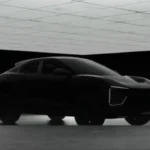Key Highlights:
- South and Southeast Asia EV markets could absorb $1.3 trillion by 2030.
- EVs in India are cheaper to own than internal combustion engine vehicles.
- Over 70% of EV three-wheeler buyers are first-time purchasers from low-income households.
- Investment in battery-swapping and charging networks is essential for EV growth.
$1.3 Trillion EV Market Opportunity in South and Southeast Asia
A recent study reveals that South and Southeast Asia’s emerging markets, led by India, could absorb up to $1.3 trillion in green capital by 2030. The analysis, published by LeapFrog Investments, Temasek, Mahindra Last Mile Mobility Limited, and Battery Smart, highlights the massive opportunity for private markets and impact investors in transforming mobility.
Cheaper Electric Vehicles in India
The report emphasizes that owning an electric vehicle in India is already more cost-effective than owning an internal combustion engine (ICE) vehicle. According to the study, electric scooters and three-wheelers are $40-$112 cheaper annually to own than their fuel-powered counterparts.
Growing Demand Among First-Time Buyers
A major driving factor behind this emerging opportunity is demand from first-time buyers, particularly from low-income households. Mahindra believes that over 70% of EV three-wheeler buyers are first-time purchasers from such households, showcasing the potential for EV growth in the region.
Expanding EV Infrastructure and Production
The report also cites case studies by Mahindra Last Mile Mobility Limited and Battery Smart, which indicate that EV production and infrastructure, including battery-swapping facilities and charging networks, are rapidly expanding across South and Southeast Asia. These developments are crucial for supporting the rising demand for electric vehicles.
Need for Investment in Infrastructure
While the growth is promising, the study stresses an urgent need for investment in infrastructure like battery-swapping stations and charging networks. These facilities are vital for accelerating the transition to electric mobility, particularly as mobility emissions account for 10% of Asia’s total greenhouse gas emissions.
Battery-Swapping and Charging Network Developments
The expansion of battery-swapping stations, supported by compatible battery systems from different automakers, has significantly boosted EV recharging infrastructure. These improvements are helping to create a more efficient and accessible charging network, which will further accelerate EV adoption.
Also Read: MG Comet Electric Car Now Available Under Rs 5 Lakh
ELCTRIK Speaks
The report’s findings highlight a $1.3 trillion opportunity for emerging EV markets in South and Southeast Asia, driven by demand from first-time buyers and cost-effective electric vehicle ownership. However, realizing this potential will require significant investment in infrastructure, particularly in battery-swapping and charging networks. As EV production and infrastructure continue to expand, the region is poised for a major transformation in its mobility sector.







